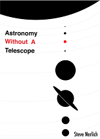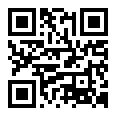The Moon
Understanding the lunar cycle is an entertaining pursuit if you walk your dog in the evening—or can just spare a contemplative moment in the backyard. Either way, you’ll need to check where the moon is over the course of a few evenings to see what’s going on. Just after sunset is the best time since that will be the time when the full moon rises in the east—always a inspiring sight.
Every night after sunset, for the two weeks prior to the full moon you will see the moon at one of the phases above. A new moon will be right over at the west at sunset and then it will quickly set right behind the sun. A first quarter moon (about a week later) will have half the face lit up and be about midway high in the sky and then proceed towards the west over the next six hours or so before it sets. The full moon (another week later) rises in the east and spends all night crossing the sky to the west. It will set in the west about the same time the sun rises in the east when the sun rises.

The apparent motion of the moon from east to west each night is, like everything else in the sky, a result of the Earth’s rotation. It’s only by taking a quick peep every evening for the two weeks prior to the full moon is where you learn what is really going on. The moons 28 day orbit around the Earth causes a slow and steady progression of the moon from the western horizon to the eastern horizon over that two weeks (14 days) prior to the full moon.
If you took off in a space craft and hovered over the south pole you would see the moon orbiting the Earth in a clockwise direction. You would also see the Earth rotating in that same clockwise direction, but about 28 times more quickly. That clockwise movement (when viewed from the south), is the same direction that most objects in the solar system rotate or orbit—presumably an inheritance of the original direction of spin of the dust cloud that that collapsed down to form the solar system about 5 billion years ago.
Although it orbits, the moon doesn’t rotate—or at least it only rotates once per orbit so that it keeps the same face orientated to he surface of the Earth all the time (which you can see in the picture above). The progressive lighting of this face happens as it moves from a position on the sun side of the Earth (new moon) when its other side from us is lit to a position directly opposite from the sun when the face we can see is fully lit.
Some lunar facts and figures:
- As it doesn’t rotate, a solar day on the Moon (time from one sunrise to the next) is the time it takes to do one full orbit around Earth (27.3 days).
- The ‘dark side’ of the Moon gets just as much sunlight as the face we can see from Earth. However it is, at least, all dark when you see a full moon from Earth.
- Although tidally locked, there is some ‘sway’, called libration, of the moon through its orbit of Earth, meaning we do get to see a bit more than 50% of its surface. There is a good animation here.
- The widely accepted ‘big whack hypothesis’ proposes that the moon formed from the debris of a collision between the early earth and a large object (given the name Theia) about 4.5 billion years ago. This debris was mostly surface crust from each planet with the denser cores of each coalescing within a reformed Earth. This is suggested to explain the relatively low density of the Moon (mainly silicons) and the higher relative density of Earth (with a big iron-nickel core)—in comparison with the other inner (rocky) planets.
- The Moon’s history was confirmed by lunar samples returned by Apollo—see here for more information, including how to spot the Apollo landing sites.
- Due difficulty securing graphics the above pictures are how the Moon looks from the Northern Hemisphere—from the Southern hemisphere we see the same face, but upside down.




